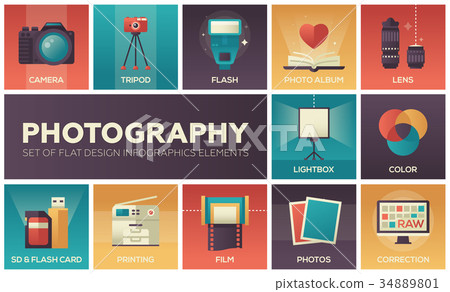Transform Your Photography By Understanding Illumination Techniques That Can Raise Your Images-- Find The Usual Pitfalls That Could Be Holding You Back
Transform Your Photography By Understanding Illumination Techniques That Can Raise Your Images-- Find The Usual Pitfalls That Could Be Holding You Back
Blog Article
Web Content Author-Beck Isaksen
As a professional photographer, you understand that lights can make or damage your images. Recognizing the subtleties of both natural and artificial light is vital for recording the mood and clearness you aim for in your job. Whether you're chasing after the excellent golden hour radiance or adjust your fabricated arrangements, understanding these elements can elevate your digital photography considerably. But there prevail risks that several neglect, and identifying them can change your approach to every shoot. Allow's explore what you may be missing out on and exactly how it can influence your results.
Comprehending All-natural Light
Comprehending natural light is critical for any type of photographer seeking to enhance their work. It's the foundation of terrific digital photography, affecting state of mind, tone, and clearness. When you fire outdoors, take note of the time of day. The golden hour-- quickly after sunrise and before sunset-- uses soft, cozy light that can change regular scenes right into magnificent pictures.
Don't underestimate the power of cloudy days. Cloud cover diffuses sunlight, producing a soft, also light that's ideal for pictures and macro photography. You'll locate colors appear this sort of lights without severe darkness.
Placing matters, as well. Always consider your topic's orientation to the light. If the sun's behind your topic, you may end up with a shape, which can be remarkable yet mightn't be what you want. On the other hand, straight sunlight can produce unflattering shadows.
Explore angles; in some cases, changing your perspective can yield amazing results. Usage Photographer near me , like water or sand, to bounce light onto your topic, including measurement.
Mastering Artificial Light
Mastering man-made light is important for photographers that intend to take their skills to the next level. Whether you're making use of speedlights, studio strobes, or continual lights, understanding how to control these sources can substantially improve your pictures.
Beginning by familiarizing on your own with the essentials of light quality, instructions, and shade temperature. Experiment with various modifiers like softboxes, umbrellas, or grids to manage the gentleness or violence of the light.
You'll locate that soft light usually creates lovely results, while harsher light can include drama and depth. Personal branding avoid darkness; they can boost the three-dimensionality of your topics.
Pay attention to the positioning of your lights. A light positioned also near to your subject can produce uncomplimentary results, while too far away can cause a lack of information. Make use of a light meter or your cam's pie chart to guarantee you're exposing properly.
Lastly, bear in mind that synthetic light can be blended with ambient light for creative impacts. Stabilizing these sources might take technique, but once you understand it, your digital photography will truly beam.
Techniques for Different Circumstances
When you step into various shooting circumstances, adapting your illumination strategies is critical for capturing the best pictures. For exterior portraits, make use of the gold hour-- morning or late afternoon light-- to soften shadows and boost complexion.
If it's a harsh midday sun, consider using a reflector to bounce light back onto your topic or seek shaded locations for a more even direct exposure.
In low-light scenarios, like interior events, raise your ISO and make use of a large aperture to let in more light. A tripod can aid remove electronic camera shake, allowing for longer direct exposures without obscuring.
If you're contending evening, explore off-camera flash to produce dynamic lights and deepness in your images.
For product photography, use diffused lights to stay clear of rough reflections. Softboxes or light camping tents can aid accomplish this result.
When photographing landscapes, consider the direction of light and time of day, as it can significantly change the mood of your shot.
Constantly prepare to change your settings and placing based on the scenario, as versatility is vital to understanding illumination in digital photography.
Verdict
To conclude, grasping lighting is crucial to elevating your photography skills. Welcome Click To See More throughout gold hour, and don't avoid experimenting with synthetic light techniques. By adjusting your approach to different circumstances, you'll capture sensational pictures that resonate with emotion and quality. Bear in mind, the appropriate lights can transform an ordinary shot into something amazing, so keep exercising and refining your understanding of both natural and artificial light. Delighted shooting!
